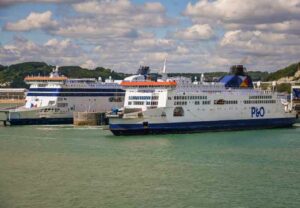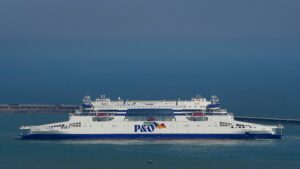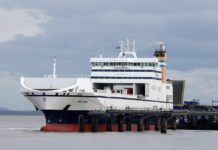P&O Ferries has shared promising results from its new fuel and energy efficiency initiative following significant measures to reduce carbon emissions in 2023.
The introduction of P&O Ferries’ new dedicated Fleet Support Centre for Fuel and Energy Efficiency, alongside the introduction of the new hybrid ferry P&O Pioneer, has contributed to a reduction of almost 50,000 tons of carbon emissions from the fleet during 2023.
P&O’s Fleet Support Centre, based at the company’s Dover headquarters, uses the latest SmartShip technology and fuel meters onboard each ferry. This gives the company a wealth of new data that can be used to track and reduce fuel and energy consumption. The ability to see granular data on fuel consumption for each route and vessel allows P&O Ferries to investigate any changes in consumption and see the result of efficiency efforts straight away.
 The data also gives deep insight into the impact of different variables such as: the weather, operating system, method of operating the vessel and its schedule. Close collaboration with the ship teams and other stakeholders is critical to the success of fuel reduction in using the data to optimise vessel performance.
The data also gives deep insight into the impact of different variables such as: the weather, operating system, method of operating the vessel and its schedule. Close collaboration with the ship teams and other stakeholders is critical to the success of fuel reduction in using the data to optimise vessel performance.
Since the rollout across the P&O Ferries’ fleet in recent months, the Fleet Support Centre’s new approach has reduced fuel consumption and related emissions on key routes during 2023, with further fuel reductions of 5% expected for 2024.
Examples of the initiative’s results so far include:
- On the Hull-Rotterdam route, a change in speed and consumption was noted as the vessels adjusted to keep on schedule. A slight adjustment to the schedule allowed the vessels to keep to a consistent speed and resulted in a fuel reduction of 3.6% ton per leg.
- On the Larne-Cairnryan route, the two vessels were showing different fuel consumption despite operating the same route. Deeper analysis of their operating systems and the route showed a 7% decrease in fuel consumption in 2023.
- On the Dover-Calais route, the new system allowed P&O Ferries to find the most effective way to operate its new hybrid ferry P&O Pioneer, which uses a technologically advanced system with battery packs that optimises efficiency and significantly reduces emissions. This new approach ensures the vessel consumes the least fuel necessary for effective operations.
Impact on emissions
P&O Pioneer was introduced on the Dover-Calais route in June 2023. The vessel’s hybrid technology and innovative double-ended design (meaning that she does not need to turn around to leave the port) means that she uses up to 40% less fuel per crossing compared to our other vessels on the Dover-Calais route.
 This reduces carbon emissions by 6.49 tons per crossing – this is broadly equivalent to driving an average diesel car for 23,500 miles. P&O Ferries’ second hybrid ferry, P&O Liberté will come into service in March 2024, completing the replacement of the oldest generation of vessels in the company’s cross-Channel fleet.
This reduces carbon emissions by 6.49 tons per crossing – this is broadly equivalent to driving an average diesel car for 23,500 miles. P&O Ferries’ second hybrid ferry, P&O Liberté will come into service in March 2024, completing the replacement of the oldest generation of vessels in the company’s cross-Channel fleet.
Owen Barry, Director of Maritime Operations at P&O Ferries, said: “P&O Ferries is committed to decarbonising its operation and our two new hybrid ferries, P&O Pioneer and P&O Liberté have shown that we are a step ahead in reducing our fuel consumption and related emissions. But for us to continue to drive down our emissions we have taken steps to digitalise our entire fleet so we have useful and reliable data on how our vessels are performing.
“We believe that our approach is leading the sector by combining the latest technology with a dedicated, experienced in-house team who work in close collaboration with our crew to get the best performance from every vessel in our fleet. We have already seen a solid reduction of fuel compared to 2022 and we expect another 5% decrease during 2024.”












